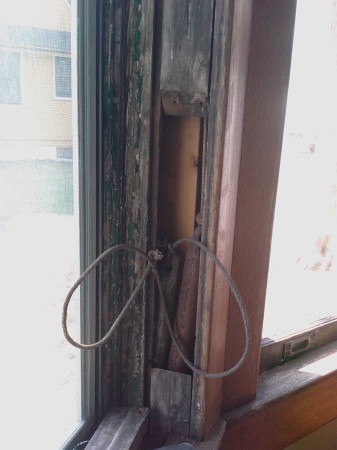
Renovating a historic building presents many challenges. Incorporating high energy-saving standards adds multiple layers of complexity to the project.
Few of these challenges are as convoluted as maintaining the delicate balance between respect for the building’s historic character and integration of modern energy saving technologies. Windows become a particularly complex piece of the puzzle as they are both central to maintaining a building’s historic integrity and also one of the primary means of energy loss.
While the default choice is often to replace historic windows in order to increase energy savings, many factors must be weighed, and the decision is not necessarily as simple as it seems.
- Historic Integrity – The window size, configuration, and construction detailing are a key component to maintaining a building’s architectural integrity
- Condition – Damage to historic window sashes window frames can be repaired. Even rotted portions may be able to be rebuilt. Sometimes a window is beyond repair and must be replaced. In such cases, it is important to select windows of similar size, configuration, and materials to the original.
- Maintenance – Historic windows were designed and built to be maintained over time rather than replaced when they fail. Basic pulleys and simple construction details make them relatively easy to repair.
- Sustainability – Restoration and long-term maintenance of historic windows keeps material out of landfills.
- Lead Paint – Paint on historic windows was often formulated to contain lead to increase its durability and improve appearance. Because lead is a poison, maintenance and restoration of historic windows requires special consideration.
- Energy Efficiency – Despite what window the window industry says, studies have found that a properly restored, weatherstripped, and maintained historic window with a good storm window can achieve similar performance ratings as many replacement windows. And they can last hundreds of years!
Double Hung Windows
A double-hung window has two operable sashes – the top sash opens down and the lower sash opens up. This allows air to circulate effectively through a room and reduces the need for mechanical heating and cooling. The benefit in restoring historic double-hung windows is twofold. First, historic windows are “repairable” without specialized products or tools. Second, reuse of existing windows diverts material from landfills.
The first step in the process is removing the sashes from the window frames. Historic double-hung windows are designed to be “deconstructed” and repaired. Deteriorated lead paint should be removed from the windows using a lead-safe work methods, in accordance with Federal and state guidelines. Removal of the paint allows workers to better assess the condition of each sash and make necessary repairs.
The weight pockets to the side of older windows may need to be rebuilt. Missing sash rope, weights and pulleys have to be located, repaired or replaced to return each window to working order. Metal weatherstripping can be installed to create a better seal between the window and the frame. The final step is to put the windows back together with new glazing, which is the material that holds the glass into the wood frame. It can be a long and extensive process to meticulously restore a window.
Windows are a major component of a building’s “shell”, and one of the points that must be examined in an energy retrofit. However, buildings behave as interactive systems where the foundation, walls, windows, doors, insulation, and roof work together to keep energy in and weather out.